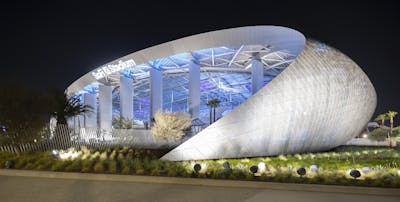
Is Your Structure Monsoon Ready? Originally published on LinkedIn by Matt Pavelchak, PE, Engineer at Walter P Moore Diagnostics
Overview
My team has seen quite a few examples of collapses during construction throughout my career at Walter P Moore because bracing was done improperly or was missing completely. One example that comes to mind is a pre-engineered metal building that collapsed overnight. We determined that the building could have withstood the applied wind load that evening if the permanent lateral load resisting elements, like shear wall components, had already been installed. But because it was still a bare frame with no construction bracing, the structure failed and collapsed in on itself.
Luckily, this particular failure occurred at night when no one was on site, but unfortunately, my team has worked on many collapses like this where workers have been seriously injured or even killed. That’s why bracing is so important during erection. Collapses like this can cost millions of dollars, but they can also cost lives.
Why is Bracing Required in the first place?
Most people don’t realize that bracing during construction is required for all steel frames, during most precast and tilt-up concrete applications, and many other types of structural systems. During construction, buildings are subject to lateral loads, and bracing helps resist those forces until the permanent lateral load-resisting system is fully constructed and engaged. Lateral forces during construction arise from several sources, including environmental loading (wind/seismic), initial out-of-plumbness of the frame, and applied loads due to construction live load.
The structural Engineer of Record (EOR) on the project will design and size the permanent lateral-load resisting system, but the contractor is responsible for providing adequate lateral support during construction until it’s fully engaged. Contractors should work with the EOR to determine when the permanent lateral-load resisting system is fully engaged and temporary bracing can be removed.
Typical steel column baseplate configurations are not designed to carry significant overturning moments or other temporary construction forces. A properly designed bracing system which might include the use of guy wires or cables can provide a temporary lateral load resisting system and transfer applied lateral loads as shears across the column baseplate.
Resources and Standards
If you’re looking for further information on bracing best practices, we follow two predominant references.
The first is the American Institute of Steel Construction Design Guide 10, which provides prescriptive examples and bracing requirements for low-rise structural steel buildings. These prescriptive guidelines are meant to provide a basis for the bracing of common steel frame configurations. You can also use the same principles for buildings over 60 feet in height as well, factoring in engineering principles and design judgment to extend those examples to a more complicated structure with larger demands. Seek out the advice of a licensed professional engineer to configure such a system for mid- and high-rise construction.
The second guide we consult is the Precast Concrete Institute’s Erector’s Manual, which gives guidelines, examples, and rules of thumb for bracing pre-stressed concrete structures.
The Correct Path Forward
Safe erection of buildings of all types requires close coordination between the EOR and the Contractor who are respectively responsible for the permanent and temporary construction of lateral load-resisting systems. Discuss submittal and erection plan requirements on your project and understand what the permanent lateral load-resisting system is comprised of.
Having a well-developed and articulated plan, and then correctly executing that plan, will prevent negative outcomes during construction and help ensure the stability and safety of your building.


